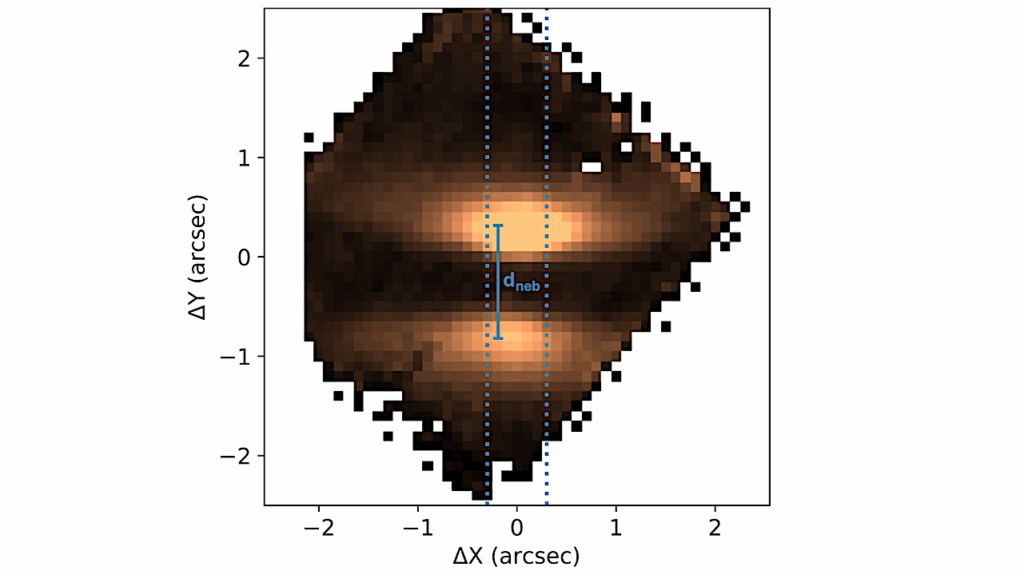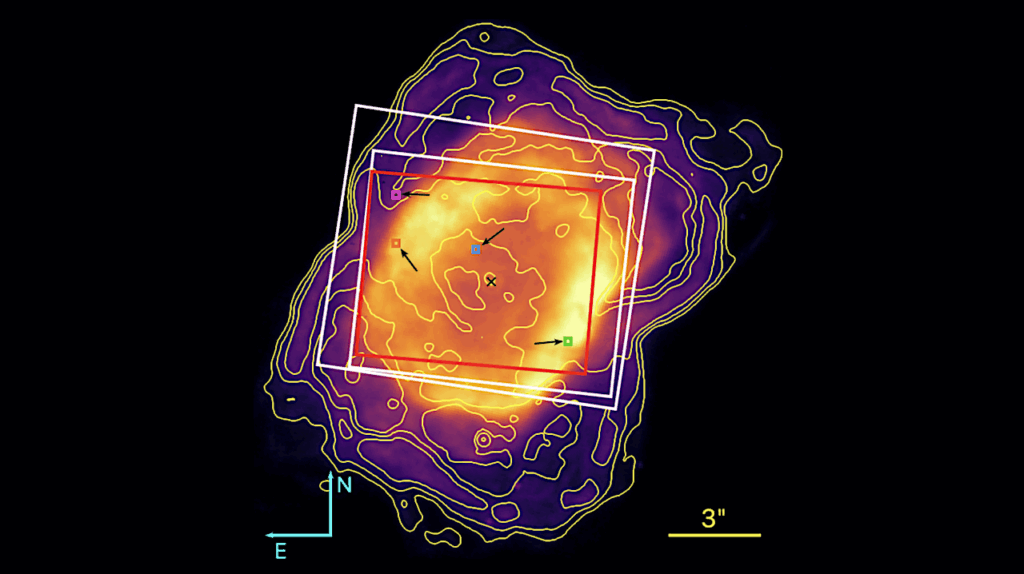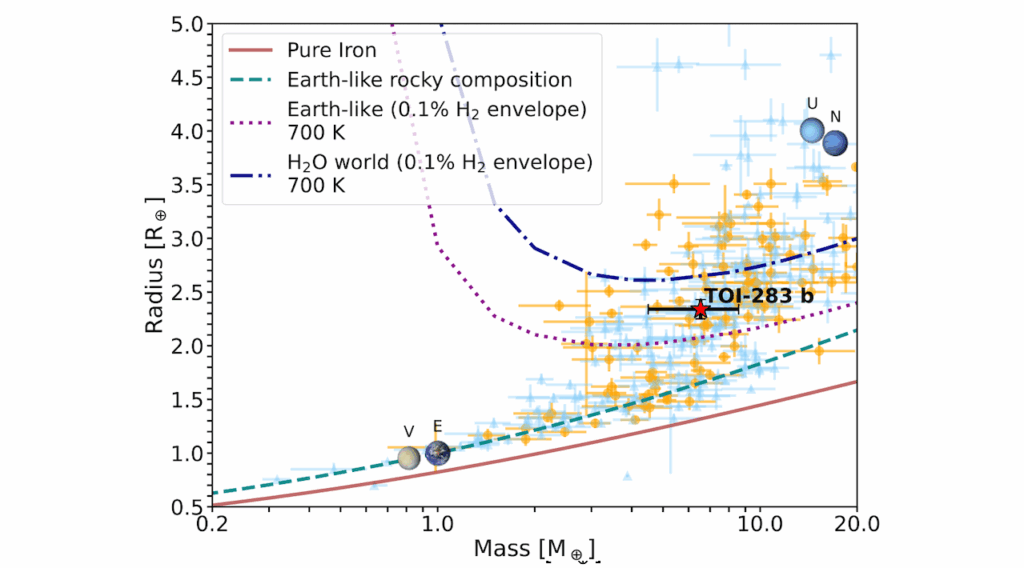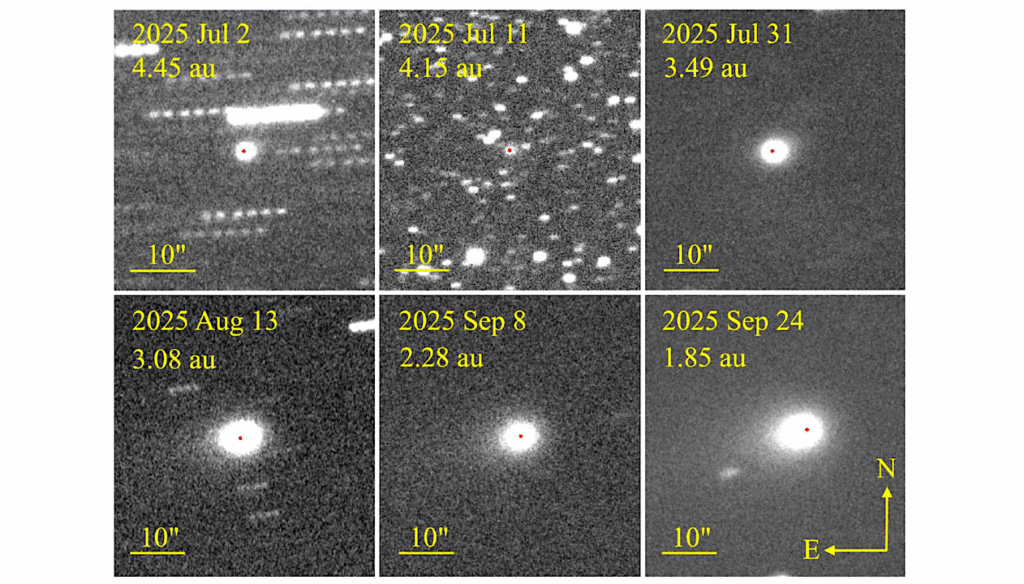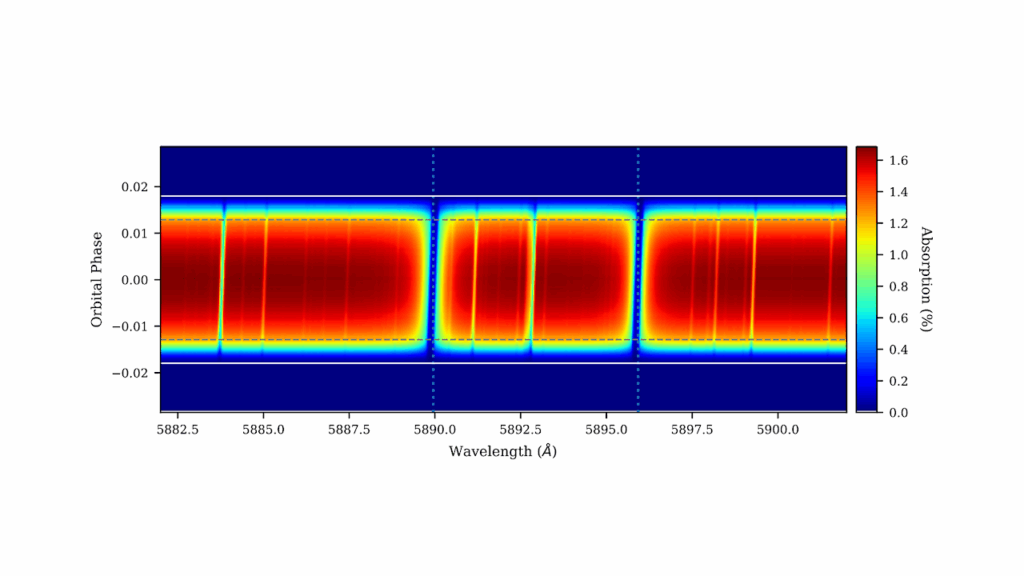Warm Ice Giant GJ 3470b – a Hazy, Low-methane, and/or Metal-rich Atmosphere?

We report our spectroscopic investigation of the transiting ice giant GJ 3470b’s atmospheric transmission, and the first results of extrasolar planet observations from the new Keck/MOSFIRE spectrograph.
We measure a planet/star radius ratio of Rp/Rs = 0.0789 +/- 0.0020 in a bandpass from 2.09-2.36 micron and in six narrower bands across this wavelength range. When combined with existing broadband photometry, these measurements rule out cloud-free atmospheres in chemical equilibrium assuming either solar abundances (5.4 sigma confidence) or a moderate level of metal enrichment (50x solar abundances, 3.8 sigma), confirming previous results that such models are not representative for cool, low-mass, externally irradiated extrasolar planets.
Current measurements are consistent with a flat transmission spectrum, which suggests that the atmosphere is explained by high-altitude clouds and haze, disequilibrium chemistry, unexpected abundance patterns, or the atmosphere is extremely metal-rich (>200x solar). Because GJ 3470b’s low bulk density sets an upper limit on the planet’s atmospheric enrichment of <300x solar, the atmospheric mean molecular weight must be <9. Thus, if the atmosphere is cloud-free its spectral features should be detectable with future observations. Transit observations at shorter wavelengths will provide the best opportunity to discriminate between plausible scenarios. We obtained optical spectroscopy with the GMOS spectrograph, but these observations exhibit large systematic uncertainties owing to thin, persistent cirrus conditions. Finally, we also provide the first detailed look at the steps necessary for well-calibrated MOSFIRE observations, and provide advice for future observations with this instrument. Warm Ice Giant GJ 3470b. I. A Flat Transmission Spectrum Indicates a Hazy, Low-methane, and/or Metal-rich Atmosphere Ian J. M. Crossfield, Travis Barman, Brad M. S. Hansen, Andrew W. Howard (Submitted on 29 Aug 2013) Comments: Accepted to A&A. Light curves will be available at CDS (or download arXiv tarball) Subjects: Earth and Planetary Astrophysics (astro-ph.EP) Cite as: arXiv:1308.6580 [astro-ph.EP] (or arXiv:1308.6580v1 [astro-ph.EP] for this version) Submission history From: Ian Crossfield [view email] [v1] Thu, 29 Aug 2013 20:00:02 GMT (1447kb,D)


